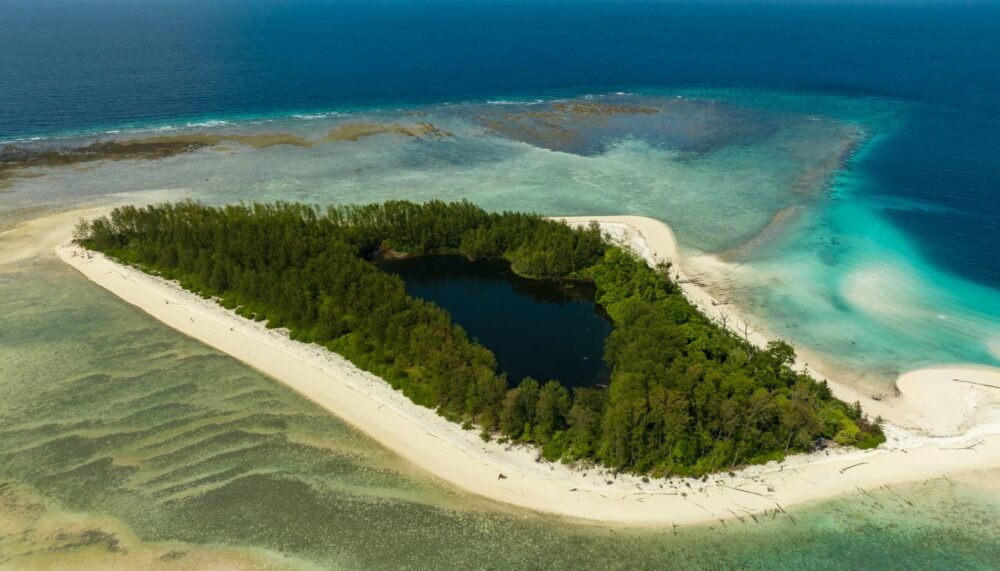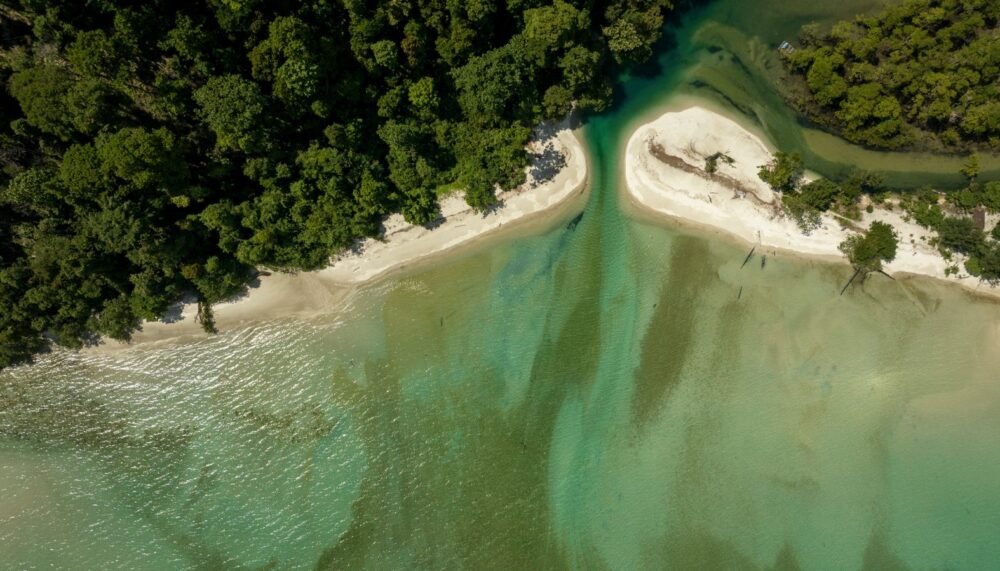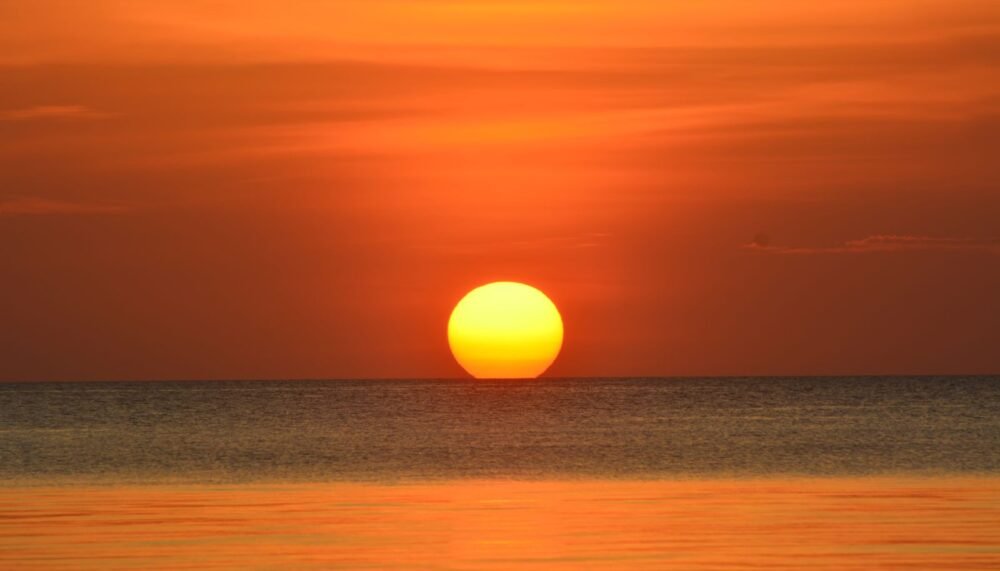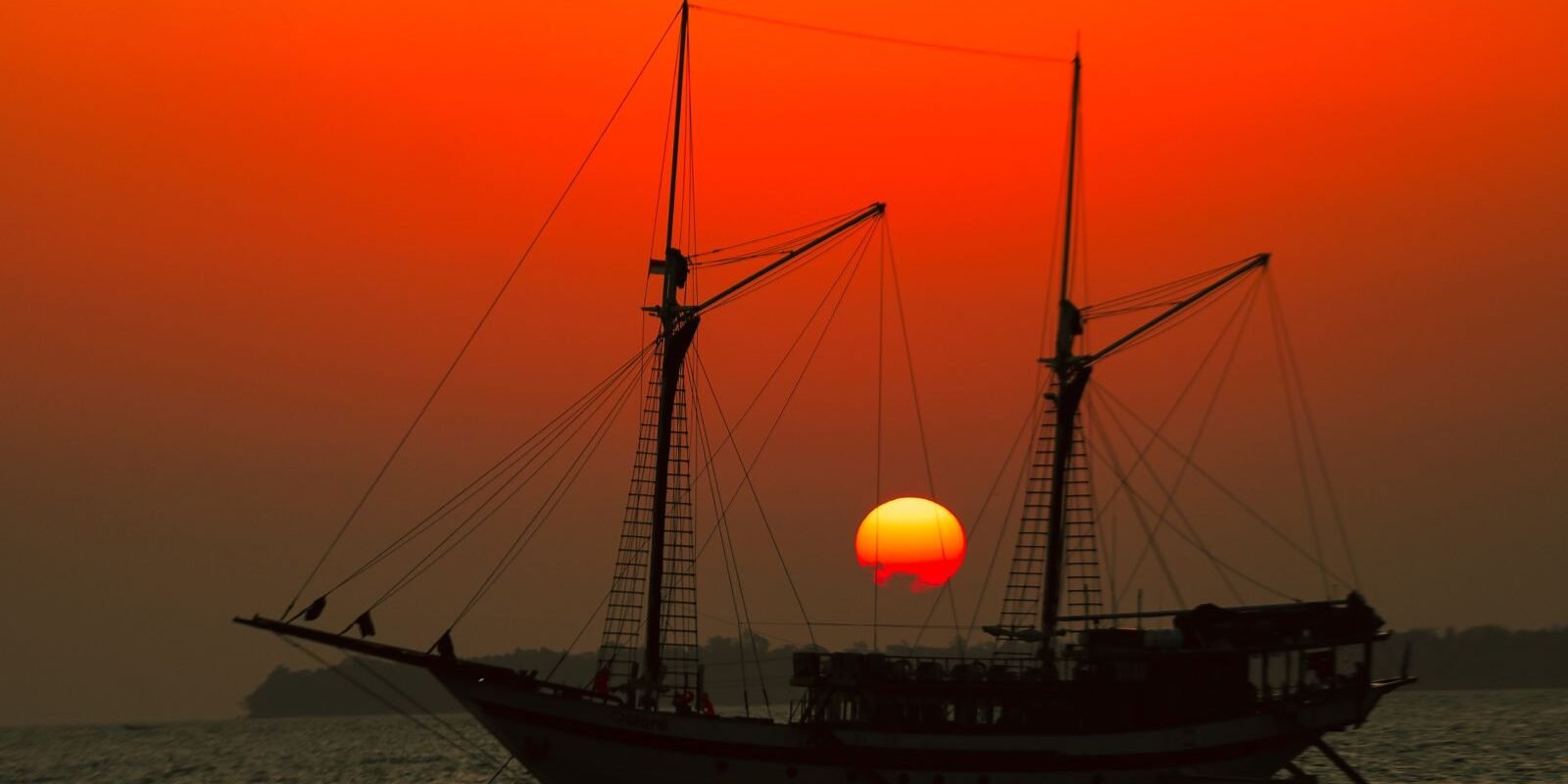Word: Ayu Arman
From Karawawi, our speedboat headed towards Venu Island. The island of turtle village, as the locals call it. The journey from Karawawi to Venu takes about an hour.
We sailed past many uninhabited forested islands, which had beautiful sandy beaches. One of them is Venu Island.
Venu is the southernmost uninhabited island of Kaimana. When our speedboat docked on its white sandy beach, we were truly mesmerized by the calmness of its crystal-clear sea, with shades of turquoise surrounding the island, as if it is floating on the expanse of the blue sea.

Hundreds of fish-hunting birds frolicking on the beach make the coastal scenery even more beautiful. As we entered the island, we heard various bird sounds echoing among the towering trees.
This island has a land area of approximately 16.7 hectares with a circumference of no more than 3 km. It was originally a split island that was later filled with saltwater, resulting in a saltwater lake with a depth of up to 1.5 meters covered by a rainforest.

There are many interesting corners to explore on Venu Island. Apart from the expanse of white sand surrounding the island with clear, turquoise seawater, the island is also a resting place for hundreds of bats, eagles, and various other birds.
However, this small island is more famous as the home for green turtles (Chelonia mydas), hawksbill turtles (Eretmochelys imbricata), and olive ridley turtles (Lepidochelys olivacea) to eat and lay eggs.
Nearly every day, turtles in large numbers come to Venu Island to lay their eggs at night. After laying their eggs, the turtles return to the open sea, leaving their eggs on the beach.
If the eggs are safe from predators, they hatch within 60 days, and the hatchlings make their way to the open sea, and eventually return to Venu Island, their homeland.
The peak nesting season for turtles on Venu Island occurs in September. Unfortunately, on that day, we did not encounter them. We only saw traces of sand mounds, which were remnants of their nesting sites. We also saw bats and eagle nests.
In addition to turtles, eagles, and bats, this small island is also home to various other important endemic animals, such as sea cucumbers, giant clams, goat head shells, conch snails, and nautilus. Therefore, the island has been designated as a wildlife sanctuary and also a Buruway marine conservation area. So, if you pass through Buruway waters, do not miss the chance to visit this island.
This small, uninhabited island often serves as a resting place for fishermen. Before heading out to sea, they usually stop by here. Or conversely, they come just to rest, wait for morning, or wait for the waves to calm down before continuing their journey.

It is also often a destination for tourists who want to enjoy solitude amidst the vast expanse of water. Escaping to an uninhabited island can indeed be therapeutic to dispel boredom.
Walking around the island barefoot is also a pleasant activity to do. You can stroll among the upright trees to find a spot to enjoy the bright earth light from the eastern horizon and await the sunset.
The sunset view here is truly beautiful. You will be awestruck by the beauty of Kaimana’s sunset phenomenon from this island. At night, your eyes will be treated to a sparkling horizon adorned with a cluster of stars. At Venu, the beginning and end of the day are truly remarkable times.
The charm of Venu’s beach with its expanse of white sand and clear light blue water can also clear your mind. The island holds underwater beauty with a variety of fish species and colorful coral reefs that grow healthily. So, you can swim, dive, and fish around this island.
Now, if you want to experience camping on the beach accompanied by the sound of waves on an uninhabited island, Venu can be your choice of vacation. Here, you can enjoy a private island experience by savoring the scent of the sea and playing to your heart’s content from sunrise to sunset without being disturbed by human traffic.
The consequence is that you need to be prepared to stay in a place without the facilities and comforts usually found on inhabited islands. Therefore, you will need to bring a tent, sleeping bag, flashlight, other outdoor camping equipment, and adequate food supplies.
Vacationing on an uninhabited island requires you to befriend nature. Here, survival skills you once learned in scouting can be put into practice. But one thing is for sure: setting up a tent, making a campfire, and then cooking dinner—perhaps grilling fish you catch yourself—will bring unparalleled satisfaction.

Remember, you must also contribute to preserving the island. Although Venu Island has been designated as a wildlife sanctuary and conservation area, the rate of damage on this island continues to increase. Abrasion is evident, leaving behind fallen she-oak trees (Casuarina equisetifolia) along the coastline.
The threat of rising sea levels is also a real concern for the island whose highest point is only 5 meters above sea level. Venu Island faces a sea-level rise threat of 1.76 cm per year and could potentially disappear by 2304. This process would accelerate even faster if extreme weather events and ecosystem degradation continue without conservation efforts.
Coral reefs, seagrass beds, mangroves, and coastal trees here have actually formed an ecosystem balance to mitigate abrasion.
However, if damage due to natural factors cannot be prevented, it can still be prevented through human factors by involving tourists and the local community in the island conservation. We should be grateful by preserving the natural resources and beauty of this island so that in the future, what this small island produces can be enjoyed not only for now, but also in the future.***

